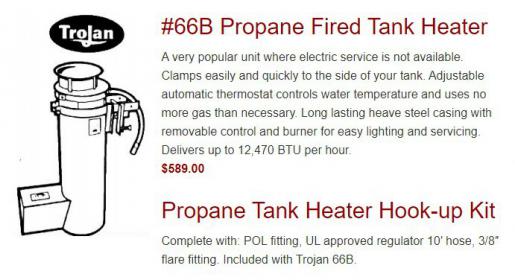Could be used as a trickle charger, but solar panels would be less expensive way to do that. Marine winds are really different than onshore winds. ETA: and I think that’s what Clanter’s proposing–a trickle charge. Rest of my treatise below is more about people interested in replacing grid power with small wind turbines
More info below, but fair warning that the rest of my post is going to get wonky.
I’m in the renewable energy biz and while I’m a big proponent of windpower, homeowners are generally getting fleeced by those small residential sized turbines. Notoriously prone to malfunctions and no one to service them. But the real problem is that their “rated wind speed” is so high that unless you have an ideal site they produce much less power than homeowner is paying for. The cost per kilowatt-hour ends up being high enough that the better investment would be to pay a contractor to run power out where you need it.
Why is rated wind speed important? It’s the wind speed at which the turbine will actually put out its nameplate output. So if you buy a 1500W turbine, for example, it’s not going to produce 1500W until you get sustained winds at that rated speed. The specifications will express rated speed in meters/second (industry standard) and most of the small turbines need wind @ around 13-14m/s to hit their nameplate power. That translates to 30-32 mph. Few places see that kind of wind on a sustained basis (or put it this way, few people would want to build a home there). To have a prayer of achieving the rated speed, you need to be 20 ft higher than the tallest obstacle within 500ft of your turbine. So if you have mature 40ft trees, that’s a 60ft tower, which gets pricey and zoning rules may restrict that anyway. Anything below that is swirly, “disordered” wind that has very little useful energy. Don’t get me wrong, your turbine will spin, but it’s achieving a fraction of its rated power.
If you’re going to do residential renewable energy, solar is usually a better buy, even in northern climates.
Thus concludes my wonk.

 You can probably get a propane tank fairly reasonable, no electricity, no batteries, no shorting out and we only fill the propane once a year. The horses are in North Central KS where it does get below freezing and the tank sits out in the open with no wind block.
You can probably get a propane tank fairly reasonable, no electricity, no batteries, no shorting out and we only fill the propane once a year. The horses are in North Central KS where it does get below freezing and the tank sits out in the open with no wind block. So it now has a cage around it for protection.All of the livestock before left it alone.
So it now has a cage around it for protection.All of the livestock before left it alone.